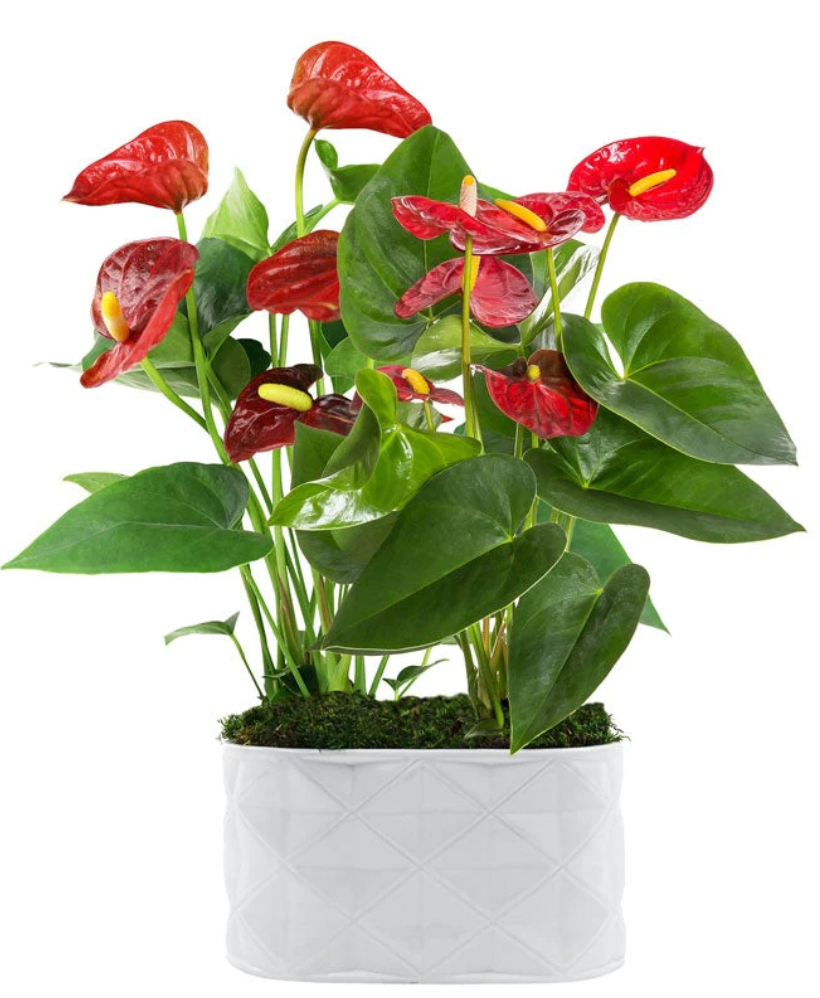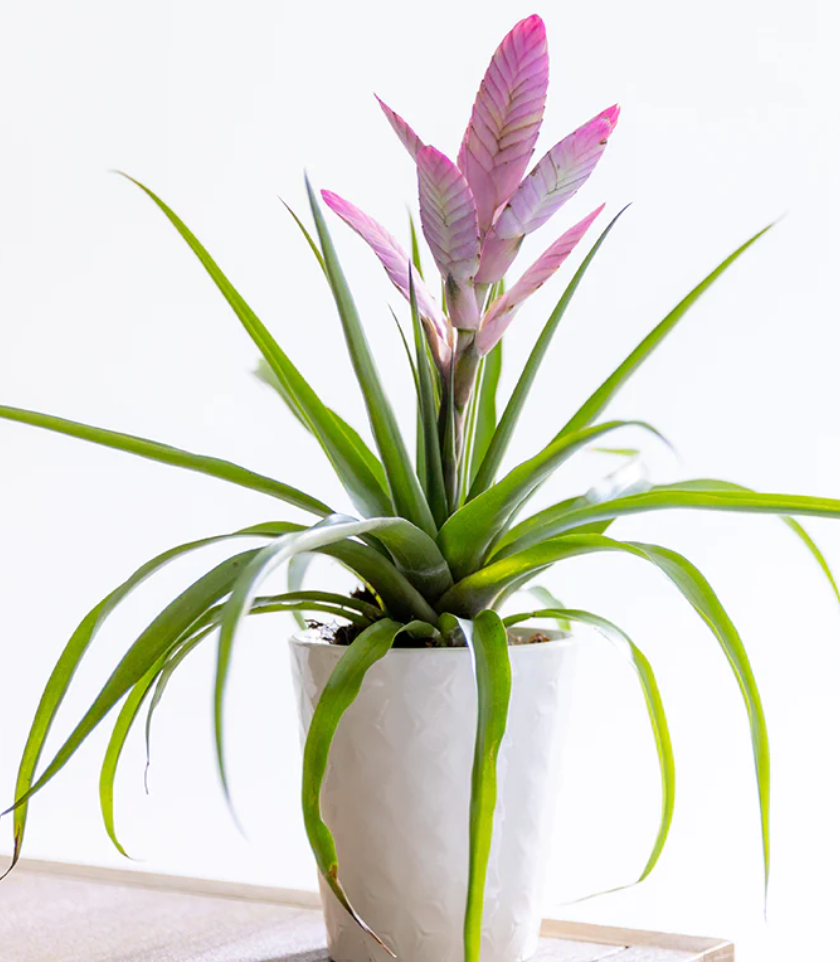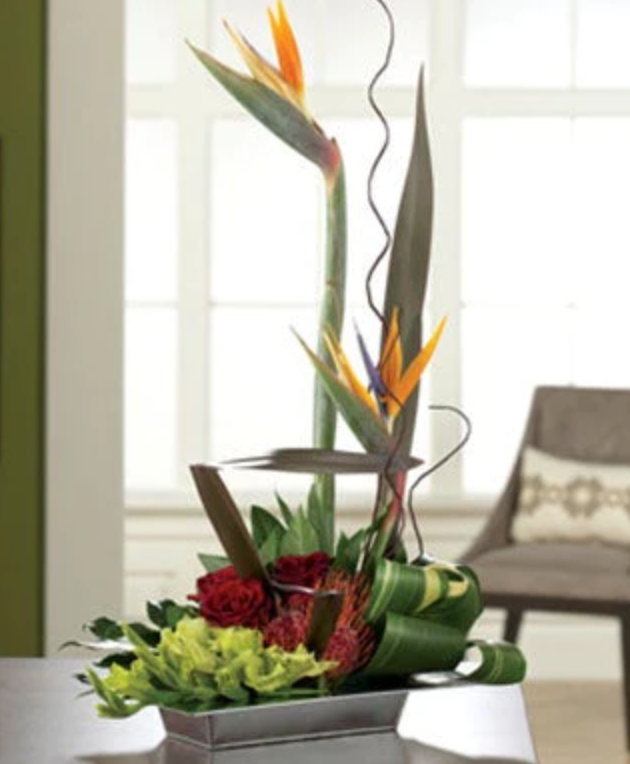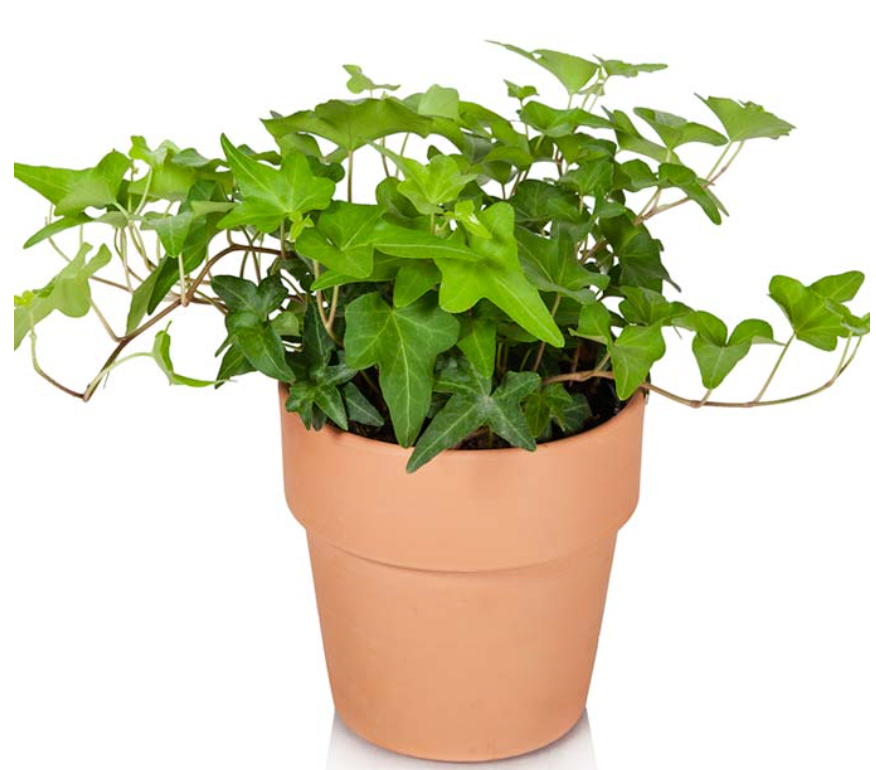Light and Temperature Requirements: Anthuriums thrive in bright, indirect light. Place them near a window with filtered sunlight or in a well-lit room. Direct sunlight can scorch the leaves, so it's important to provide some shade during the hottest part of the day. Anthuriums prefer temperatures between 60°F (15°C) and 85°F (29°C). Protect them from cold drafts and extreme temperature fluctuations.
Watering: Proper watering is essential for Anthuriums. Aim for consistently moist, but not waterlogged, soil. Water thoroughly and allow the top inch of soil to dry out before watering again. Anthuriums are sensitive to overwatering, which can cause root rot, so it's crucial to strike a balance. Adjust your watering frequency based on the environment and the season to prevent both underwatering and overwatering.
Humidity and Air Circulation: Anthuriums thrive in high humidity. Mist their leaves regularly or place them on a tray with pebbles and water to increase humidity around the plant. Good air circulation is vital to prevent fungal diseases. Avoid placing Anthuriums in stagnant or poorly ventilated areas. If humidity is low, consider using a humidifier or grouping plants together to create a microclimate.
Potting and Soil: Use a well-draining potting mix specifically formulated for Anthuriums or orchids. A mixture of peat moss, perlite, and orchid bark works well. Ensure the pot has drainage holes to prevent waterlogging. Anthuriums prefer to be slightly root-bound, so repotting should only be done when the roots have filled the container.
Fertilization: Feed Anthuriums with a balanced, water-soluble fertilizer specifically formulated for houseplants. Dilute the fertilizer to half-strength and apply every two to four weeks during the growing season (spring and summer). Reduce or halt fertilization during the winter months when the plant is in its dormant phase.
Pruning and Maintenance: Regular maintenance ensures healthy growth and appearance. Remove any yellowing or damaged leaves promptly. Trim spent flowers and prune leggy stems to encourage compact growth. Anthuriums produce new leaves from the center of the plant, so avoid cutting into the crown.
Pests and Diseases: Anthuriums are generally resistant to pests but can occasionally attract mealybugs, aphids, or spider mites. Inspect your plant regularly and treat any infestations promptly using natural or chemical methods. Ensure good airflow and avoid overwatering to prevent fungal diseases.




